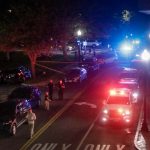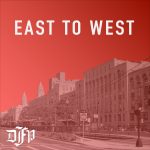In response to the increased bicycle traffic on Commonwealth Ave., Boston University officials and students have taken various steps this semester to ensure the safety of those traveling on two wheels.
Bicycle accidents reported to the BU Police Department have increased significantly over the past few years, BUPD spokesman Sgt. Jack St. Hilaire said. While seven accidents occurred in both 2005 and 2006, the numbers jumped to 16 in 2007 and 22 in 2008.
‘I just think that’s the increase in bicycle use,’ St. Hilaire said. ‘This year alone, I’ve seen more bikes than ever.’
The most dangerous locations for accidents are in front of Marsh Plaza and at the intersection of Commonwealth Avenue and Cummington Street by Warren Towers, St. Hilaire said. Many students assume the University Road intersection is most hazardous, but BUPD has not responded to any accidents there so far this year, he said.
With more bicycles on the road, the issues of high traffic volume and roads poorly designed for cyclists have only worsened, he said.
‘We’re fortunate that we don’t have more pedestrians and bicycles struck,’ St. Hilaire said.
To address these problems, BU officials formed a Bicycle Safety Committee in’ Oct. The group has 19 members, which includes administrators, faculty members and students, and it is working to improve conditions for cyclists on campus, Chairman Craig Hill said in an email.
‘It became clear that the university needed to take an active role in encouraging and facilitating safe bicycling, in providing sufficient bicycle parking and in collaborating with local community cyclist groups,’ Hill, the Associate Auxiliary Services vice president, said.
The committee worked with Boston officials and the state’s highway department to label the bicycle lanes on Commonwealth Avenue with arrows and bike symbols, Hill said. It is still trying to have signs installed on the road that will draw further attention to the lanes.
To improve cyclist safety group members are working with BUPD to provide safety tips online in handouts and through safety training courses, Hill said. They hope to have a bicycle safety website available this month.
Some of the websites’ features, including information about cycling laws for Boston, a map of campus bike rack locations with bike capacities and a bike registration form, Hill said.
The committee has also increased the number of bike racks available on campus, he said. Spaces in front of the George Sherman Union have increased by 50 percent. There are now 283 bike racks on campus, with room for almost 2,000 total.
Taking action
Students have also formed a group called BU Bikes this semester to help the growing number of cyclists on campus. Founder Galen Mook, a former Daily Free Press columnist, said he created the group after seeing the dramatic increase in cyclists on the road.
‘I became aware that bikers themselves don’t know how to navigate the urban area responsibly or safely,’ Mook, a first-year BU graduate student, said.
The group has held helmet raffles and shown movies to teach students about safety and to bring the biking community together. There are currently between 120 and 150 people on the BU Bikes email list, Mook said.
Mook said it is important to teach the rules of road because many new cyclists do not fully understand the difficulties of riding in an urban area. In addition, because the increase in cyclists is so new, Boston drivers and pedestrians have not yet adjusted to their presence on the road.
‘We have notoriously bad drivers in Boston,’ he said. ‘The drivers don’t care about bikes, and they’re erratic and angry, and the bikers aren’t used to biking in Boston so they bike irresponsibly and haphazardly. It’s a huge safety issue.’
Mook said cyclists should be taught hand signals, the importance of wearing a helmet and the dangers of being ‘doored,’ which is when people ride too close to parked cars and get hit when those car doors are opened. In addition, he suggested the city put up more signs to label bicycle lanes and that the university include bicycle training in its freshman orientation program.
‘People need to understand the dangers so they can watch out for them,’ Mook said.
Lessons learned
College of Engineering sophomore Jon Stansel has experienced these dangers firsthand. He has collided with cars while bicycling twice this semester, once in October and once in November. He was not wearing a helmet at either collision, both of which occurred at the University Road intersection.
Stansel said he still feels safe and uses his bicycle several times a week. However, he said he has realized the importance of paying attention to his surroundings and wearing a helmet.
‘In general, people who are driving tend not to be mindful of cyclists, and other cyclists will ignore the traffic laws,’ he said.
Stansel said he would like to see the bicycle lanes on Commonwealth Ave. extended west beyond the BU Bridge, because it can be hard to use the lanes when pedestrians use them as sidewalks, especially at intersections.
In an interview with the Free Press last month, BU President Robert Brown said administrators are working to persuade state and city officials to extend Commonwealth Ave. renovations further westward, and that thes improvements could include extended bicycle lanes.
Stanzel said he uses his bicycle because he enjoys the opportunity to travel in shortened periods of time.
‘With the BU shuttle, you have to ride by their schedule,’ he said. ‘With the T, you have to pay them ridiculous amounts of money. Biking represents a degree of freedom I wouldn’t otherwise have.’
Mook said another reason people are choosing to bike on campus is because it’s environmentally friendly. The culture as a whole is ‘warming up’ to the idea of urban bicycling, he said.
‘It’s sustainable, it’s green, it’s smart, and people are realizing that it’s better to have bicycles as a mode of transportation.’
This is an account occasionally used by the Daily Free Press editors to post archived posts from previous iterations of the site or otherwise for special circumstance publications. See authorship info on the byline at the top of the page.




Stansel said he would like to see the bicycle lanes on Commonwealth Ave. extended west beyond the BU Bridge, because it can be hard to use the lanes when pedestrians use them as sidewalks, especially at intersections.<p/>This is a poorly constructed and illogical sentence. I see the FreeP’s editing is really at its best.